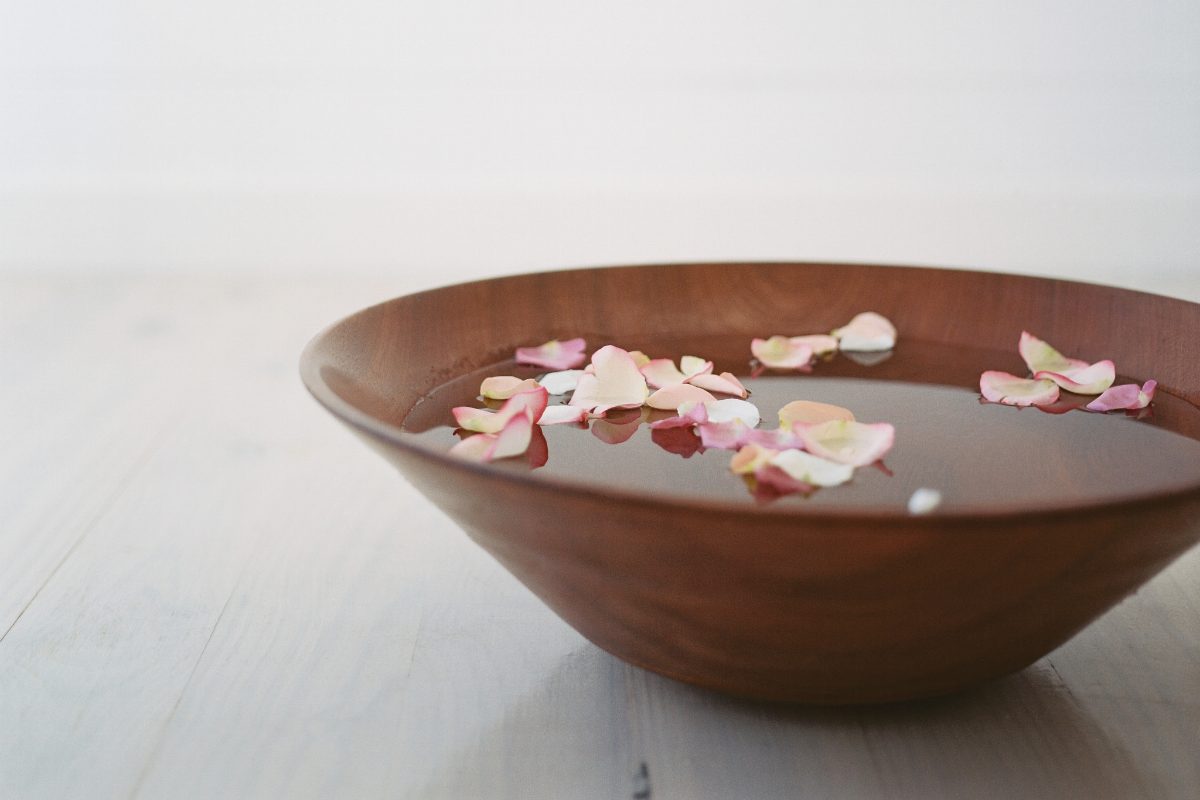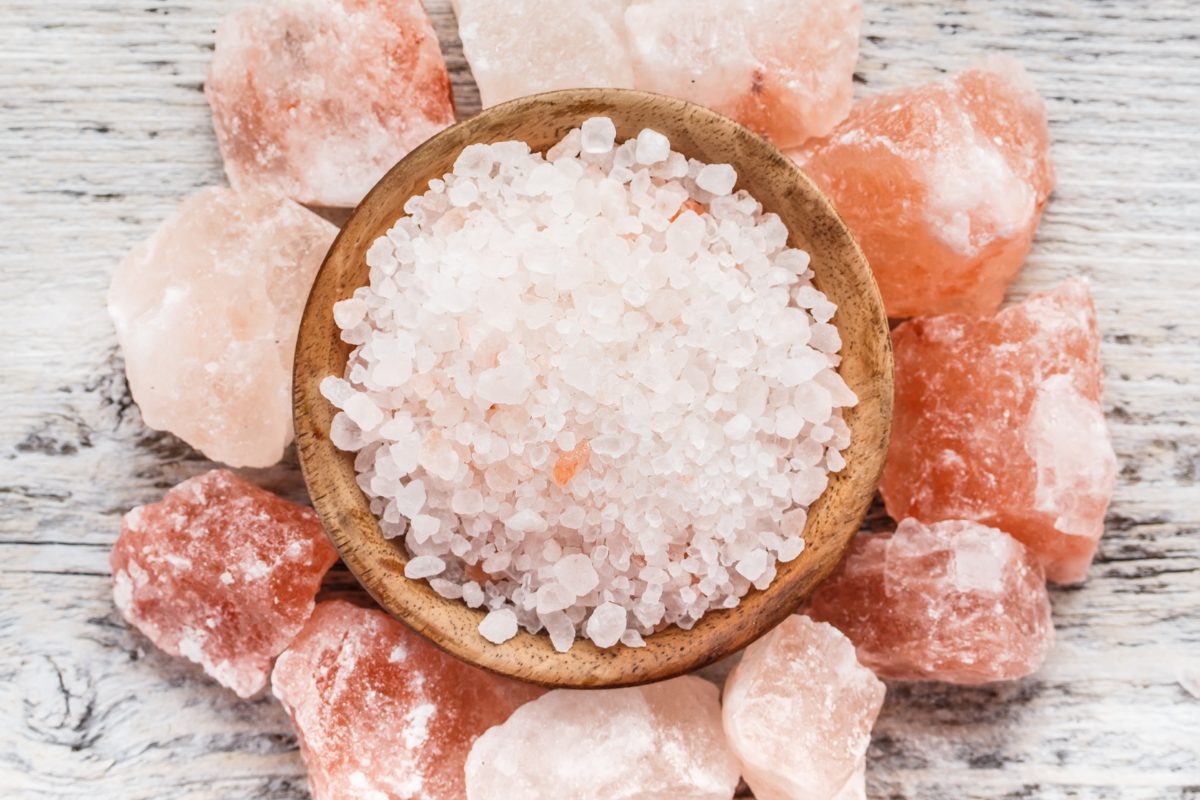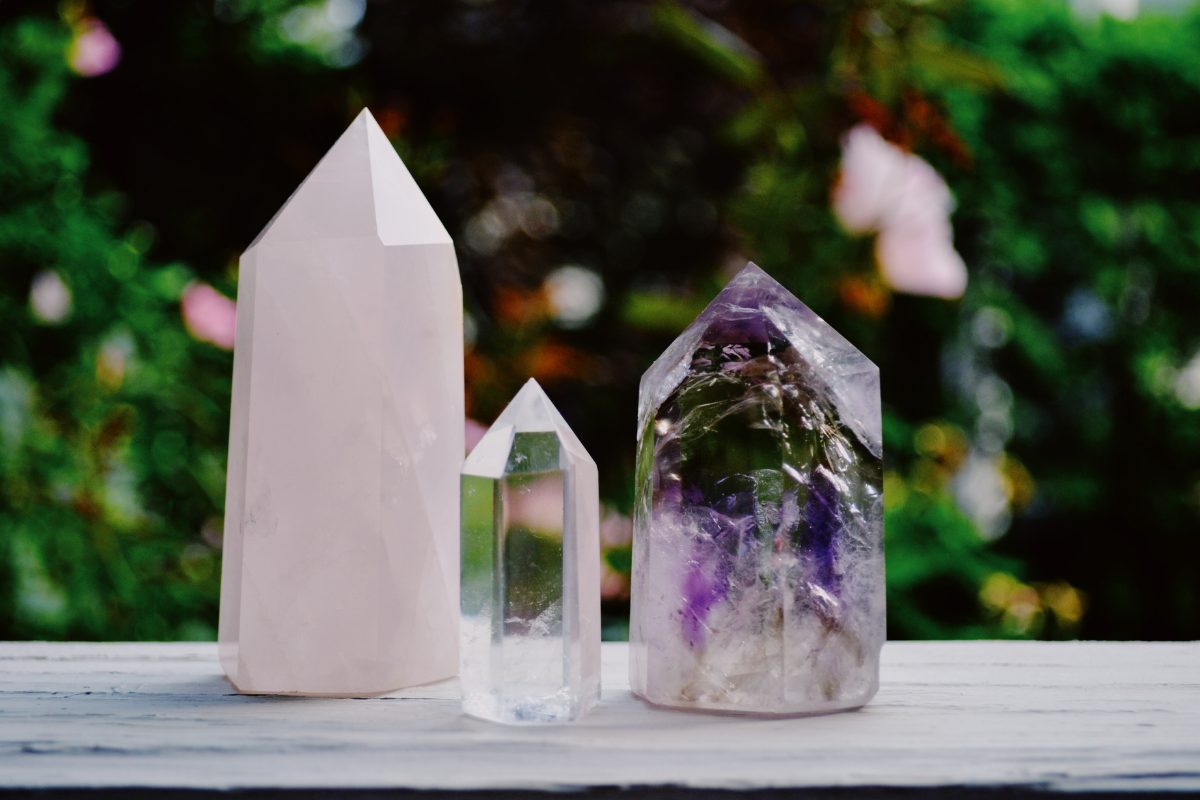Cleansing, charging, and consecrating items for magickal use is one of my regular practices. Not every object needs cleansing, charging, and consecrating, but things that I want to imbue with purpose and rely on for guidance, insight, magick, and ritual generally do. These are crystals, tarot decks, ritual tools, malas, and special clothing and jewellery.
This article is about cleansing your crystals and other magickal tools.
What is cleansing?
To cleanse an item is to remove not only its physical dirt but also its energetic muck. For example, you’ve just purchased a crystal in a shop or online. It’s been a long journey to get to you through many machines and hands. You would cleanse the crystal to purge it of that stress and debris and restore it to its best possible state.
Some items may not need cleansing. Citrine, for instance, is a crystal that never needs to be cleansed because it absorbs, transmutes, dissipates, and grounds negative energy. These properties make Citrine an excellent cleanser for other crystals.
Some items may need cleansing more frequently than others. For example, I don’t regularly cleanse most of my tarot decks, but if there’s one I’ve been reading a lot with, especially for other people, I cleanse it regularly. Crystals with strong cleansing and protection properties such as Bloodstone, Calcite, Jet, and Tourmaline also need more frequent cleansing. So does any special jewellery you often wear for purification and protection. Cleanse them regularly to empty them of the energetic grot they’ve accumulated so they can keep doing their job. It’s like taking out the rubbish.
Common ways to cleanse an item include:
- water
- earth
- salt
- brown rice
- smoke
- sound
- crystals
These are all effective ways to cleanse your tools, but not every method is suitable for every item.
Water

Crystals that rate a five or below on the Mohs Hardness Scale should not be put in water.
Developed by the German geologist and mineralogist Friedrich Mohs in 1822, the Mohs Hardness Scale is a scale from 1 to 10 characterizing the scratch resistance of various minerals. That is, it rates the hardness of minerals. What we often think of as crystals, such as Quartz, Feldspar, Muscovite, and Fluorite, are minerals.
You probably know that diamond is the hardest known natural material. It rates ten on the Mohs Hardness Scale. Minerals that score five or lower will dissolve or crack if left in water for a long time. These include Calcite, Fluorite, and Malachite. To learn more about the Mohs scale hardness of your crystals, see the IGS chart for select gems or Geology.com’s table of common minerals.
The Mohs Hardness Scale is a good guide, but it shouldn’t be the only source of information. It would be best if you also considered the combination of minerals in a crystal, the way the crystal was formed, whether it’s friable (breaks into smaller pieces), raw or polished/tumbled, and its toxicity.
For example, Chrysocolla is not only soft, but it can also make water toxic. Although toxic water could be a powerful ingredient in magick, you might not want to place Chrysocolla in a bowl with other crystals that you want to cleanse. To learn more about toxicity, check out the IGS gemstone toxicity table.
Some crystals have different forms that affect their response to water. For instance, Jet is found in two forms, hard and soft. Hard Jet was formed by carbon compression and saltwater. Soft Jet was formed by carbon compression and freshwater. Both have a Mohs hardness ranging between 2.5 and 4, but soft Jet is more likely to crack when exposed to temperature changes and be damaged by prolonged exposure to water. Solid Opals generally won’t be damaged by water, but Opals that have been layered will crack and even lose their translucence and turn grey.
There are some hard crystals that you might also want to keep out of water. Magnetite (Lodestone), Hematite, and Tangerine Quartz, which contain iron, and meteorites should also be kept dry, or they will rust.
When I cleanse my crystals with water, I put them in a bowl full of fresh water. I use river water, rainwater, moon water, or a special blend of sacred water I created. You could also use sun water and purified water, which you can purchase (e.g. distilled water) or, better yet, filter water at home yourself.
Salt and water are often combined in ritual circles for cleansing and purification use. However, I never use salt water to cleanse crystals. More on that below.
I use other cleansing methods for soft, sensitive, and toxic crystals, metals, and other delicate tools. If your heart is set on using water, lightly misting the crystal is unlikely to damage them. Sprinkling a little water on them won’t hurt most tools either. Be sure to dry them completely. You could also use water elementally instead of directly by place the crystal inside a waterproof container and put that in your bowl of water.
For jewellery, I use a commercial cleaner for semi-precious stones and pearls to clean off the physical dirt that accumulates. For the energetic muck, I use other methods described below.
For fabrics such as ritual clothing and altar cloths, I check the labels and typically wash these gently by hand using tap water or run the delicate cycle on the washing machine. I may add or dip some special items in river water, rainwater, or moon water for those natural energies, but I still wash them for safety.
Be sure to dispose of the water afterwards. I pour it out in the garden.
Earth
Burying your crystals in the earth is a safe and effective way to cleanse your crystals, especially polished ones. I don’t recommend burying raw specimens because cleaning them and getting into those nooks and crannies can be tricky. You could place your objects in a bag and bury the bag, but opt for another method if you prefer elemental contact.

Salt
Salt is a well-known cleanser and purifier. A “charging station”—a terrarium container or bowl containing Himalayan salt—for crystals looks beautiful. However, salt is abrasive and can damage soft and friable crystals. Salt can also get stuck in a crystal’s crevices and damage it over time. It can be a good option for other tools though and most tumbled stones will be fine. Dispose of the salt afterwards.
Brown rice
Rice is a basic, ancestral food associated with celebration, marriage, fertility, and abundance. Rice is absorbent. While growing, rice plants absorb arsenic, and rice absorbs water during cooking. So, rice can absorb negative energies from your crystals, malas, jewellery, and other tools.
Using brown rice to cleanse your objects is easy, effective, and won’t damage anything. Pour brown rice in a bowl and bury your crystals and other items. Dispose of the rice afterwards. I compost it.
Brown rice is recommended because it is whole grain, but you might want to experiment with white, red, and black rice.
Smoking
Burning medicinal or sacred plants, or incense, to produce smoke for spiritual cleansing and blessing is an ancient and global practice. However, “smudging” is a practice associated with some Indigenous Peoples’ unique beliefs, ceremonies, and protocols. I do not belong to any of those Indigenous groups. Therefore, I do not smudge. My practice is smoking or fumigation.
Sage is a popular herb to burn for cleansing and purification, but you might want to avoid buying white sage. Illegal harvesting and over-harvesting have led Native American groups and conservationists to worry about the future survival of white sage. There are many other plants that you can use instead of buying white sage, such as alder, ash, birch, cedar, dogwood, juniper, and mugwort. I use rosemary because it grows abundantly in our garden. I also use eucalyptus because we have a tree.
To smoke your tools, you’ll need a fire-safe bowl and a lighter or matches. You can bundle your plants and ignite the tip or place loose herbs or incense on burning charcoal. Pass your crystals and other items through the smoke.
Smoking is safe for most magickal tools. It’s a good idea to smoke your items outside, but if you can’t, be sure to open a window to let the smoke and negative energy disperse.
Sound
Music therapy is a clinical and evidence-based intervention and allied health profession. Music has been used for healing since antiquity. This is a beautiful, powerful, clean way to cleanse any magickal tool. You could chant, using a tuning bowl, a bell, or a singing bowl.
Place your crystals and other items on a clean surface. Create the sound as close to them as you can.

Crystals
You can use crystals to cleanse. As previously mentioned, Citrine absorbs, transmutes, dissipates, and grounds negative energy. Carnelian and Kyanite are also good options. Even though these crystals don’t hold on to negative energy, I still like to cleanse them. You can use other crystals. Just remember that you will need to cleanse and charge them.
Cleansing with crystals is easy, clean, and won’t damage your objects. All you have to do is pass the crystal over the tools. You could also get a bowl made out of a cleansing crystal to hold your items.
How often do you need to cleanse your tools?
It varies. Some items are used more frequently than others. Some things are more absorbent than others. If you have something that doesn’t feel as energetically positive as it once did, it’s probably time to charge it. Cleansing is a part of my spiritual hygiene, and I cleanse my items at least once a month, usually a day or two before the full moon so that I can use the lunar energy to charge them—more on that in part 2 on charging and consecration.
How long do you cleanse your tools for?
There is conflicting information about how long to cleanse your magickal tools. The same book or article that insists crystals need to soak for hours will say you can run them under tap water or smoke them for a few minutes or even use a light water mist.
Nature is powerful. You only need to walk past an infected person to catch COVID-19. The moment I step into the ocean or breathe in the fresh air of a forest, I begin to feel cleansed and restored. It doesn’t take long. So, whether I’m soaking my crystals or smoking my tarot decks, I generally do it for a short while. Trust your knowledge and your instincts. If you get the sense that your tools need a little more cleansing, spend more time with them.

